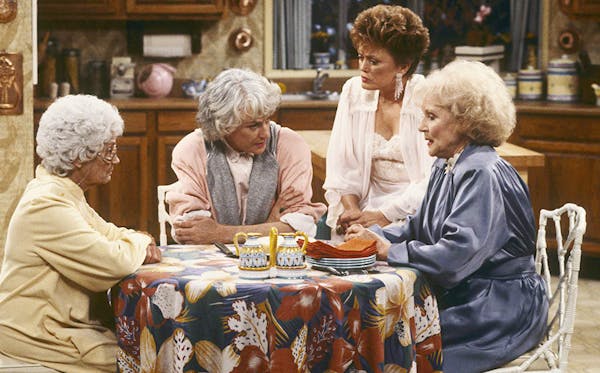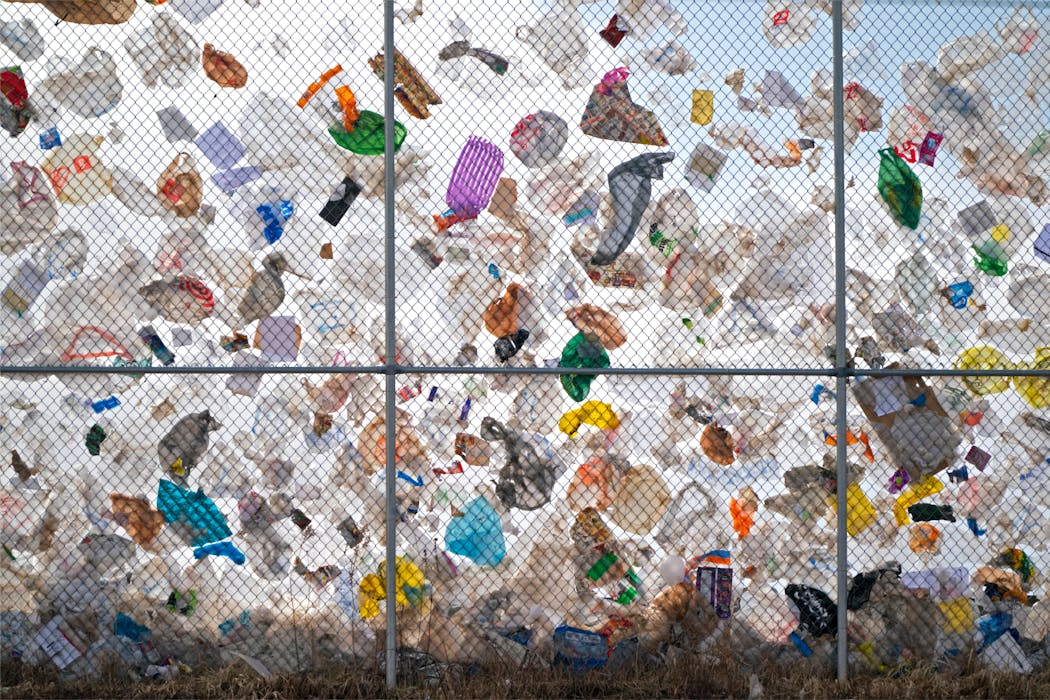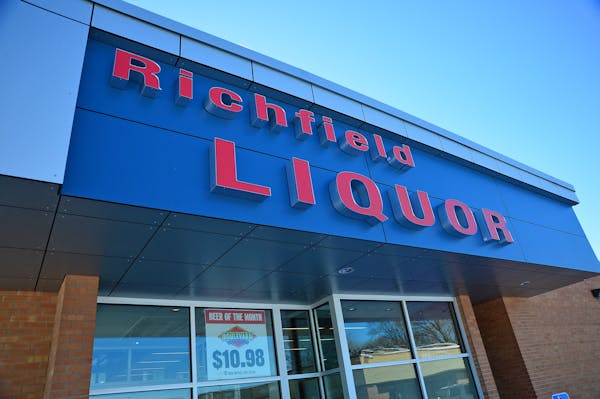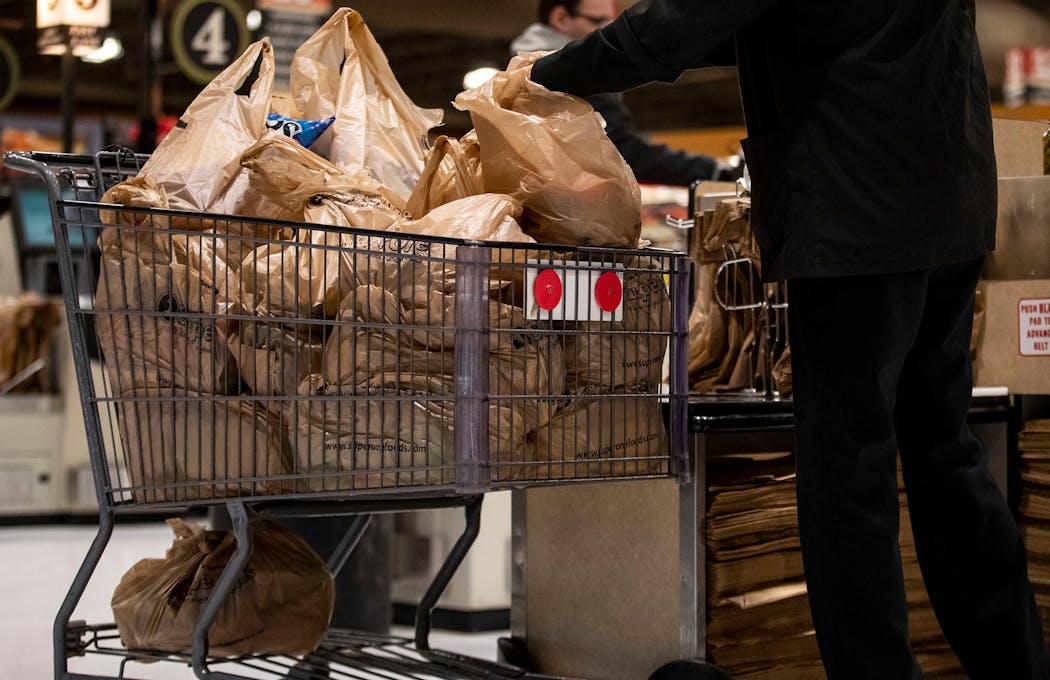What happens to the plastic bags we recycle at grocery stores?
Listen and subscribe to our podcast: Via Apple Podcasts | Spotify | Stitcher
Our modern lives are flooded with plastic film. Beyond carryout bags, film protects our food, packages, toilet paper, dry cleaning, newspapers and even boats.
The good news is that this material is recyclable. But it's mostly ending up in the trash. Just 3.9% of plastic bags were recycled in Minnesota in 2021, largely because they are not accepted by curbside recycling programs.
Film requires special treatment because it wraps around the spinning machines that sort recycled waste, which must be regularly shut down to remove it. Many diligent home recyclers instead maintain a "bag of bags" until they have accumulated enough to make a trip to a drop-off location — generally a grocery store.
Readers contacted Curious Minnesota, the Star Tribune's reader-powered reporting project, looking for more information about how this process works. Bonnie Creason noticed that some local stores stopped accepting plastic film during the pandemic, for example.
Dave York wanted to know if the film he brings to the store is actually getting recycled, and whether grocery stores bear an unfair burden for this societywide problem.
"I wondered if they were getting reimbursed somehow," York said.
What happens at the store?
Plastic film recycling is indeed mysterious. Some counties accept it at drop-off sites, but generally its recycling journey begins at private businesses — which are listed at bagandfilmrecycling.org.
The bags should be clean. Films that stretch are generally recyclable, including bubble wrap and Ziploc-style bags (No. 2 or No. 4 polyethylene plastics).
Grocery stores typically combine the recycled bags with the pallet wrap film they receive and send the material back to the distribution center via their wholesaler, said Jamie Pfuhl, president of the Minnesota Grocers Association. The store usually bears the costs of the service without any reimbursement.
"There's a human element in that plastic recycling. A lot of people put their trash in there," Pfuhl said. "And there's an employee that is responsible to go through and sort that out."
This is partly why some stores stopped taking bags early on in the COVID-19 pandemic, when it remained unclear how the virus spread.
About 175 businesses, including smaller co-op stores, give their film to Vadnais Heights-based Merrick Inc. Merrick employs adults with disabilities to pick up film from across the metro area and remove nonrecyclable material before shipping it to be recycled.
Pfuhl said most traditional grocers offer film recycling services, though sometimes customers don't know where to find it.
"I don't know … that we do the greatest job as an industry advertising that it's there," Pfuhl said, adding that customers should feel free to ask customer service or store managers.
Where does it go?
Most of the film collected at Minnesota stores is sent to Trex, a Virginia-based company that turns it into composite decking boards, according to the Minnesota Pollution Control Agency. Retailers are not required to report this information to the state, however.
"Typically, if it is getting recycled, it is leaving our region and traveling quite long distances in order to be recycled," said JoAnne Berkenkamp, managing director of MBOLD, a coalition of Minnesota companies such as General Mills and other entities focused on solving food- and farm-related problems.
That may be about to change, however.
MBOLD members have invested in a major new plastic film recycling facility that is expected to open this summer in Rogers, operated by South Africa-based recycling firm Myplas. The state Department of Employment and Economic Development also invested about $1.4 million in grants and loans in this project during the tenure of then-commissioner Steve Grove, who is now publisher of the Star Tribune.
"It will be a very sophisticated facility that has the capacity to bring in food-grade quality films and make food-grade resin out of it," Berkenkamp said. "Which is kind of the holy grail, really, in this space."
Americans use about 15 billion pounds of flexible film every year, including shopping bags, boat wrap, pallet wrap, hay bale wrap and food packaging, Berkenkamp said. Roughly two-thirds of that ends up in residences, with the remainder destined for commercial locations.
The Rogers plant will ultimately be able to process 90 million pounds of polyethylene per year — most of it plastic film. It will pelletize the films and send that material to Charter Next Generation facilities in Wisconsin to be made into new films.
"I would say it's probably the best public-private partnership that we've worked in, ever, in my career," said Wayne Gjerde, who helps develop recycling markets at the Minnesota Pollution Control Agency. Gjerde's tenure at the agency began in the mid-1990s.
Opportunities ahead
Minnesota's recycling rate — the share of the state's waste being recycled — has hovered between 42% and 45% for the past several years. The national rate is 32%.
The Twin Cities metro area's rate was 45% in 2021, far short of the state's goal of reaching 75% in the metro by 2030.
Gjerde said the trash is still full of items that could be recycled in curbside bins. Outside of that, however, expanding collection of food waste and plastic film are key opportunity areas.
"In terms of collecting film, we have to make the collection system better," Gjerde said.
If you'd like to submit a Curious Minnesota question, fill out the form below:
Read more Curious Minnesota stories:
How much of what we think we're recycling is actually getting recycled?
How do food scraps get recycled in Minn. — and how good are we at it?
The Twin Cities area is recycling more than ever. Why hasn't landfilling declined?
Is Minnesota's recycled waste really being reused?
What happens to hazardous waste Minnesotans bring to drop-off facilities?
How we choose Curious Minnesota questions submitted by readers






